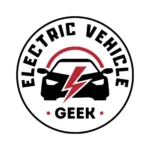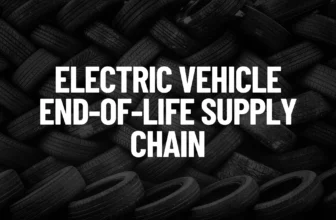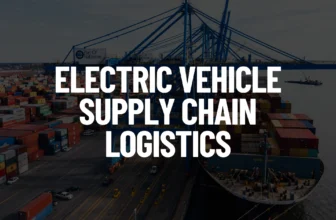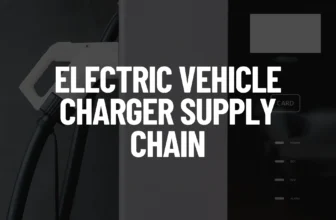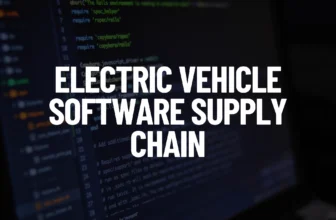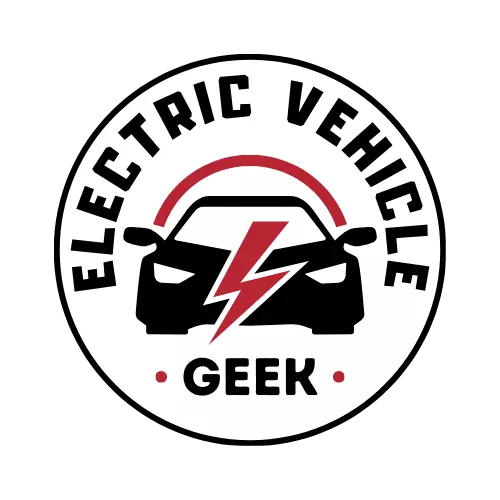The electric vehicle motor supply chain is a critical subcomponent of the broader EV supply chain, focusing specifically on the production, integration, and optimization of electric motors within vehicles.
The specialized electric vehicle motor supply chain involves several key stages, including the sourcing of raw materials, the manufacturing of motor components, and their final assembly into the vehicle’s powertrain.
The efficiency and sustainability of the EV motor supply chain are essential for ensuring the performance, cost-effectiveness, and scalability of electric vehicles in the overall electric vehicle supply chain ecosystem and the growing global EV market.
This article delves into the various stages, components, and dynamics of the EV motor supply chain, offering insights into its complexities, challenges, and future opportunities.
Table of Contents
Key Aspects of the EV Motor Supply Chain
Electric Vehicle Motor Supply Chain Materials Sourcing
The materials used in the manufacturing of electric motors are diverse and highly specialized. Sourcing them efficiently is vital for the sustainability and cost-effectiveness of the EV motor supply chain.
Rare Earth Elements (REE)
The heart of many electric vehicle motors lies in the use of permanent magnets, which are often made from rare earth elements (REEs) such as Neodymium (Nd), Praseodymium (Pr), and Dysprosium (Dy). These elements have magnetic properties essential for the operation of the motor, especially in Permanent Magnet Synchronous Motors (PMSM). While rare earths are abundant in the Earth’s crust, their concentrated deposits are limited, making their extraction and supply chain highly sensitive to geopolitical factors.
Tesla has pioneered the use of alternative motor designs that minimize the reliance on rare earths, utilizing induction motors instead of those with permanent magnets. However, most of the industry still depends on these materials, particularly for high-performance motors.
Copper: The Conductor of Electricity
Copper is indispensable in electric motor manufacturing due to its excellent electrical conductivity. It is used to wind the motor’s stator, which generates the magnetic field necessary for motor operation. The demand for copper in EVs is expected to rise significantly, driven by the increasing electrification of transportation and renewable energy systems. As a result, securing a stable copper supply is crucial to supporting the growth of the EV sector.
Iron and Aluminum: Essential Structural Elements
Iron is used in both the rotor and stator of electric motors, while aluminum is commonly used in the motor housing. Iron provides magnetic properties, while aluminum’s lightweight and strength-to-weight ratio makes it ideal for reducing the motor’s overall weight. Reducing weight is a key factor in increasing the efficiency of an EV’s powertrain.
Graphite: The Versatile Material
Although graphite is mainly used in EV batteries, it also plays a role in electric motors, particularly in components like brushes for DC motors or lubrication systems in certain types of electric motors. Given its pivotal role in both motors and batteries, graphite has become a critical material in the EV supply chain.
Electric Vehicle Motor Manufacturing: A Complex Process
Manufacturing electric motors is a multi-step process that involves high precision and a combination of specialized skills in mechanical, electrical, and materials engineering.
Rotor and Stator Production
The rotor, which is the rotating part of the motor, undergoes intricate processes such as cooling, shaft drilling, and shaft hardening to ensure it can withstand the intense forces during operation. The stator, which remains stationary, is wound with copper wire, and the entire assembly is magnetized to create the electromagnetic field that enables motion.
Housing and Assembly
The motor housing is typically made of aluminum or steel, offering protection against environmental factors while keeping the motor lightweight. After the housing is completed, the various components—the rotor, stator, bearings, and other parts—are carefully assembled to form a complete motor. Once assembled, the motor is tested to ensure it meets stringent performance standards.
Types of Electric Motors in EVs
Different types of electric motors are used in electric vehicles, each offering unique advantages in terms of power output, efficiency, and cost.
Permanent Magnet Synchronous Motors (PMSM)
PMSMs are widely used in EVs due to their high efficiency, compact size, and superior torque-to-weight ratio. These motors use permanent magnets in the rotor, offering greater performance at lower costs compared to other motor types.
Electrically Excited Synchronous Motors (EESM)
EESMs, or Wound Rotor Synchronous Motors (WRSM), do not rely on permanent magnets but instead use an externally excited magnetic field. These motors are particularly beneficial in applications that require constant speed or where high torque is needed. However, they tend to be larger and more complex.
AC Induction Motors
AC induction motors, popularized by companies like Tesla, are known for their simplicity and robustness. These motors do not use permanent magnets and instead rely on electromagnetic induction to generate a rotating magnetic field. Their simplicity and lower cost make them a favorite for mass-market electric vehicles.
DC Brushless Motors
DC brushless motors use permanent magnets and electronic controls to deliver power. They are more compact than traditional DC motors and do not require brushes, which can wear out over time. These motors are used in various applications, including smaller EVs and e-bikes.
Electric Vehicle Motor Supply Chain Dynamics
Transition from Mechanical to Electrical Systems
One of the most significant shifts in the EV motor supply chain is the move from traditional mechanical systems to electrical systems. Electric vehicles rely heavily on electronic controls, software integration, and electrical components, requiring a deep collaboration between engineers from various disciplines. This change is prompting new players to enter the automotive supply chain, including software developers and battery manufacturers.
Emerging Players and Global Competition
As the electric vehicle market expands, a range of new players are emerging in the motor supply chain, from startups focusing on innovative motor designs to established suppliers diversifying into electric mobility. Companies like Siemens, ABB, and Bosch, traditionally known for their work in industrial automation, are now key suppliers of electric motors and related components. The increased competition is driving innovation, helping reduce costs, and enhancing the overall performance of electric vehicles.
Geographic Distribution and Geopolitical Factors
The manufacturing of electric motors and their components is heavily concentrated in regions like China, which controls a large share of rare earth production, and Europe, which is home to many automotive manufacturers. Geopolitical dynamics, including trade restrictions and resource scarcity, play a crucial role in shaping the global supply chain. Efforts to localize production and reduce dependence on single-source suppliers are gaining momentum as companies seek to secure their supply chains against unforeseen disruptions.
The Role of Software in Motor Design and Integration
Software is becoming an integral part of the design, manufacturing, and operation of electric motors. Advances in control algorithms, real-time data analytics, and machine learning are being leveraged to optimize motor efficiency, predict maintenance needs, and improve overall performance. The integration of software with motor hardware is key to delivering smarter, more efficient EV powertrains.
Interconnected Components and Systems
Unlike traditional internal combustion engine (ICE) vehicles, which rely on mechanical and hydraulic systems, electric vehicles depend on the precise integration of electrical components. The relationship between the motor, battery, inverter, and powertrain is based on the flow of electrons, which requires a high level of synchronization. This interconnectedness makes the EV supply chain more complex but also more efficient in terms of energy usage and vehicle performance.
Challenges and Opportunities in the EV Motor Supply Chain
Supply Chain Vulnerability and Material Shortages
The EV motor supply chain faces significant vulnerabilities due to its reliance on specialized materials, including rare earth elements and semiconductors. The global shortage of semiconductor chips has already caused disruptions in various industries, including automotive, and the EV sector is no exception. Similarly, the extraction and processing of rare earth elements are concentrated in a few regions, particularly China, which makes the supply chain susceptible to geopolitical risks.
Diversification and Regionalization
To address these vulnerabilities, the industry is increasingly focusing on diversifying material sourcing and regionalizing production. Companies are looking for alternative sources of rare earths and establishing manufacturing facilities in different parts of the world to reduce dependence on a single country or region. This trend is expected to accelerate as governments and manufacturers seek to create more resilient and sustainable supply chains.
Innovation and Design Optimization
There are immense opportunities for innovation in the design and manufacturing of electric motors. Advances in material science, such as the development of stronger and lighter magnets, can lead to more efficient and powerful motors. Similarly, innovations in cooling technologies, electromagnetic design, and the integration of artificial intelligence (AI) can improve motor performance and reduce energy consumption.
Sustainability and Recycling
As the demand for electric motors increases, so does the need for sustainable practices throughout the supply chain. Recycling rare earth materials, copper, and aluminum is crucial for reducing the environmental impact of EV motor production. Companies are exploring ways to create closed-loop supply chains, where materials are reused or repurposed to reduce waste and energy consumption.
Artificial Intelligence (AI) and Automation
AI is already being used to optimize various aspects of the EV motor supply chain, from design and manufacturing to logistics and inventory management. Automation technologies, including robotics and AI-driven production lines, are expected to enhance efficiency, reduce costs, and improve quality control across the motor manufacturing process.
Conclusion
The electric vehicle motor supply chain is a highly dynamic and evolving system that is central to the success of the electric vehicle revolution. From sourcing critical materials to integrating advanced software solutions, every aspect of the motor supply chain is undergoing rapid transformation.
While there are significant challenges in the electric vehicle motor supply chain, including material shortages and geopolitical risks, the opportunities for innovation and sustainability are vast. The future of the EV motor supply chain will be shaped by technological advancements, greater supply chain resilience, and the drive towards a greener, more sustainable future in transportation.
As an expert in the electric vehicle motor supply chain, your knowledge and insights are invaluable in enhancing the depth and quality of this blog.
I encourage you to collaborate by sharing your expertise, real-world experiences, and case studies. Together, we can explore the intricacies of the EV motor supply chain, and uncover actionable insights, innovative solutions, and best practices that will propel the industry toward greater efficiency and sustainability.
If you find that my content has been beneficial to your work within the EV motor supply chain, I would greatly appreciate a letter of recommendation. Your support will help me refine my contributions and continue advancing the growth and optimization of the EV motor supply chain.
Let’s join forces to shape the future of the EV motor ecosystem and expand the collective expertise driving the industry forward.
Feel free to reach out to me directly at james@electricvehiclegeek.com.
Thank you for your engagement and for being a key part of this journey!
